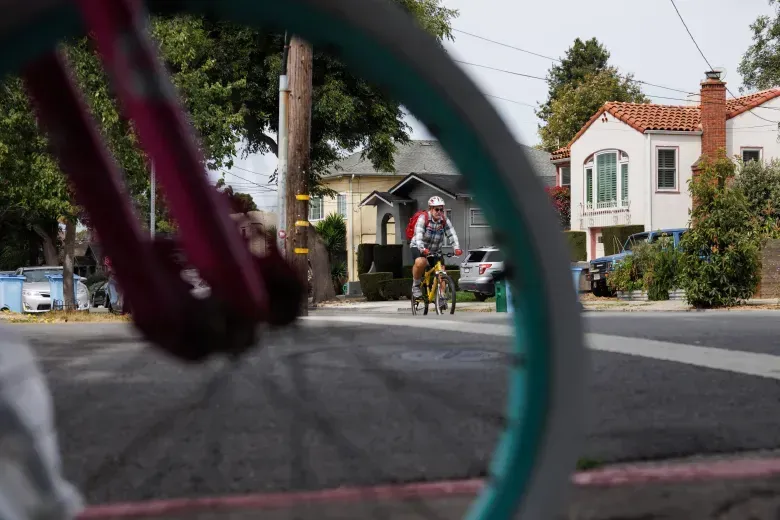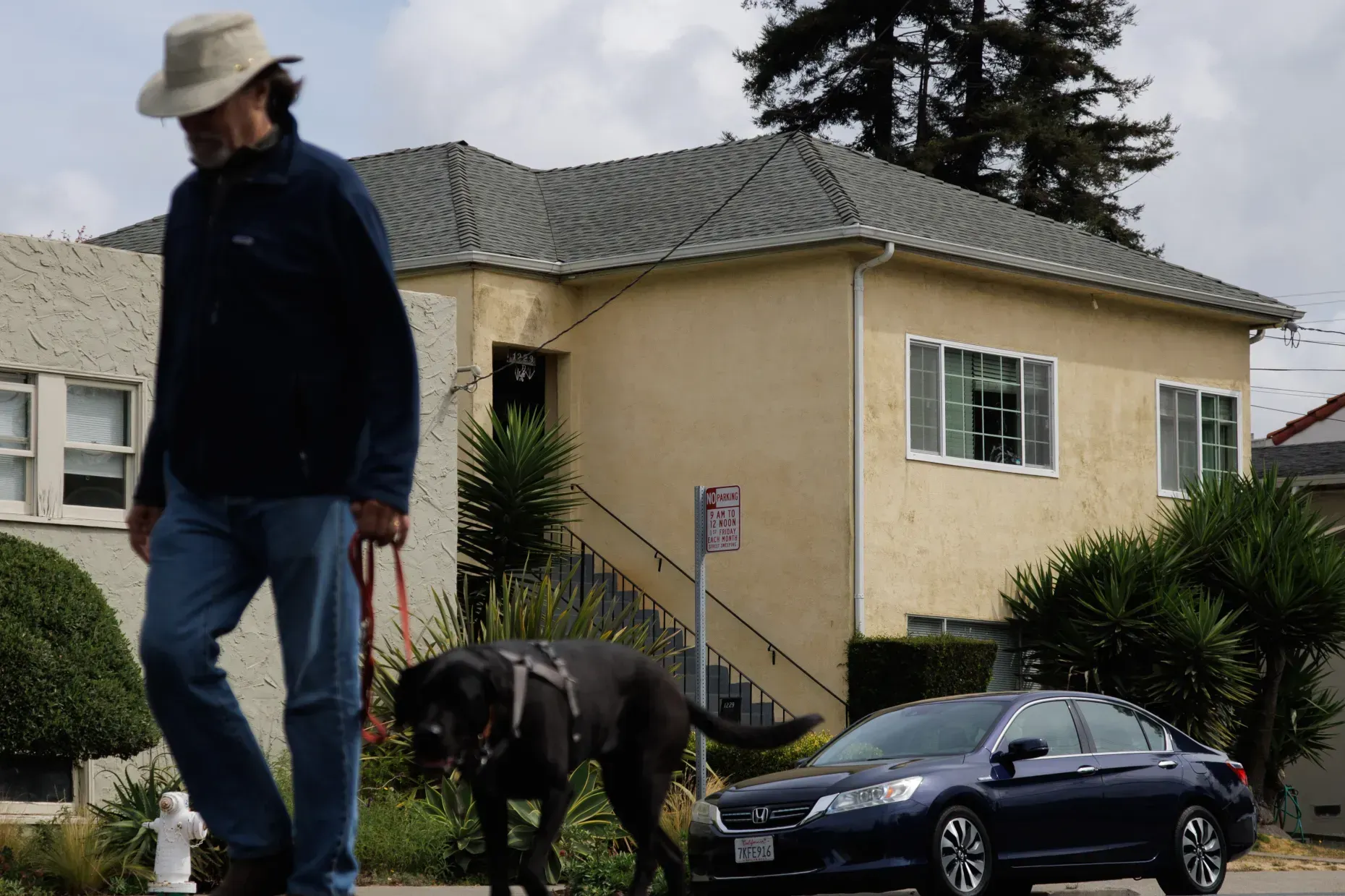Kamala Harris gave the ‘middle class’ Berkeley neighborhood of her childhood a convention shout-out. But the middle class can’t afford it anymore
BERKELEY — The fog lifted early Friday over the flatlands of Berkeley where a diverse mix of homeowners and renters had gathered for a block party the night before to watch Kamala Harris on the big screen accepting the Democratic nomination for president and delivering a shout-out to her childhood neighborhood.
“We lived in the flats, a beautiful, working-class neighborhood of firefighters, nurses and construction workers — all who tended their lawns with pride,” Harris said from the convention stage in Chicago on Thursday night.
This is the kind of middle class neighborhood and people, she said, that she would fight for if she defeats former President Donald Trump in November.
Yet much has changed in this pocket of the Bay Area since the 1970s when Harris’s mother, a UC Berkeley grad student, raised her two daughters for eight years in an upstairs apartment on Bancroft Way.
Vice President Kamala Harris’s childhood home is seen on Friday, Aug. 23, 2024, in Berkeley, Calif. (Dai Sugano/Bay Area News Group)
At one point, BXP, known for most of its existence as Boston Properties, had planned a major tech campus on the site where thousands could have worked.
Housing is now deemed an excellent option on the site, located on a property bounded by North First Street, Daggett Drive, Zanker Road and East Plumeria Drive in north San Jose, according to BXP.
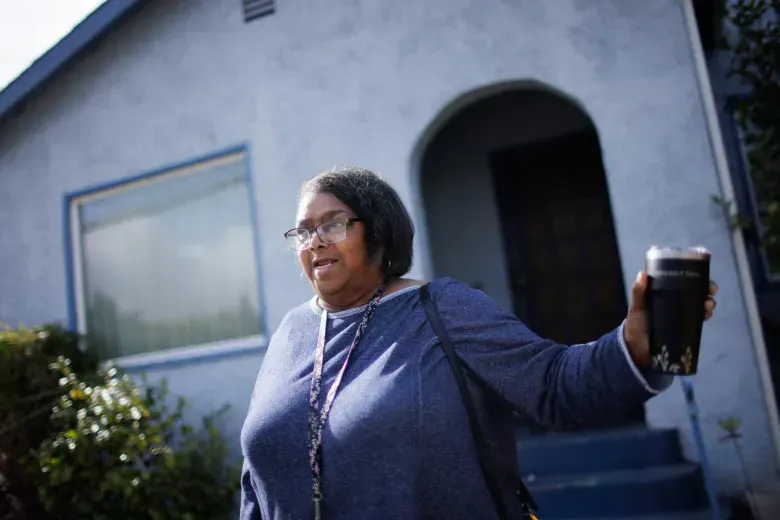
Vernita McCray, of Berkeley, who lives on the same block as Vice President Kamala Harris’s childhood home, talks about her neighborhood and Harris during an interview in Berkeley, Calif., on Friday, Aug. 23, 2024, in Berkeley, Calif. (Dai Sugano/Bay Area News Group)
Harris has made helping the middle class a central theme of her candidacy, a demographic that Trump largely appealed to in his successful 2016 presidential campaign. In a campaign video released Friday, Harris promised to create an “opportunity economy” for middle-class families “like the one I grew up in,” she said, “where everyone has a chance to get a car loan, buy a home, start a business.”
In her Thursday night speech, she also pledged to build 3 million new homes and “end America’s housing shortage.”
What she didn’t mention, however, is that Democratic policies and local “not-in-my-backyard” sentiments have often thwarted opportunities to build new housing, and Democratic-sponsored rent control programs that make some units affordable for the middle class also discourage development.
As Trump critically put it in a post on his Truth Social site, “She’s talking about the Middle Class, but she’s the one who broke the Middle Class, and made it UNSAFE AND UNAFFORDABLE!”
Still, Harris’s message resonates in this Berkeley neighborhood, a liberal bastion not far from the University of California campus where her parents met as civil rights activists, called “Poet’s Corner” for the street names of famous poets like Browning and Chaucer.
“Like all of Berkeley, Poet’s Corner has gotten radically more expensive,” said Marilyn Garcia, a real estate agent who’s worked in Berkeley for two decades. “It’s definitely affected who can afford to live there. … I don’t think that a teacher could afford to buy a house in that area these days.”
There are still educators, therapists and working-class retirees who live here, however, and attended the livestream of Harris’s speech as the sun set Thursday night. But many of them either bought their homes decades ago, have taken in renters or are renters themselves with roommates.
Celine Bonfils, a French immigrant who conducted postdoctoral research in climate science here, and her husband, also a scientist, rent a two-bedroom with their two children.
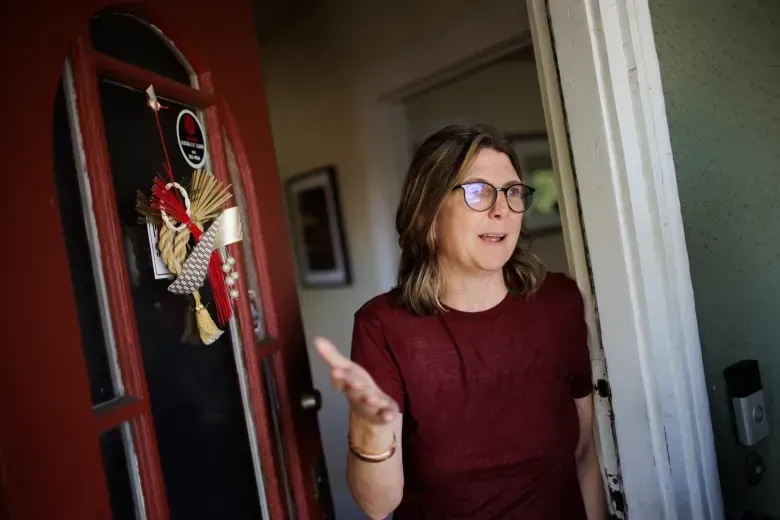
Celine Bonfils, of Berkeley, who lives around the corner from Vice President Kamala Harris’s childhood home, talks about her neighborhood and Harris, during an interview on Friday, Aug. 23, 2024, in Berkeley, Calif. (Dai Sugano/Bay Area News Group)
Like Harris, her children are the offspring of two scientists, and “we’re renting. So we are middle class,” said Bonfils, who helped set up chairs at the viewing party. “It’s not easy to buy a house.”
Pramish Thapa, a Nepal immigrant, and his wife, Annie Powers, purchased their two-bedroom house across from the old Harris home for more than $1 million. But even with low interest rates and their tech salaries — he’s an economist, and she works for an AI start-up — they still needed family help to buy it.
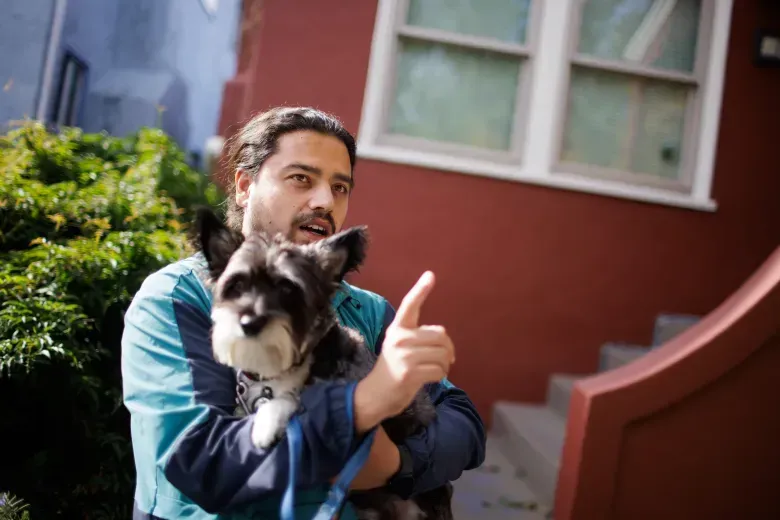
Pramish Thapa, of Berkeley, who lives on the same block as Vice President Kamala Harris’s childhood home, talks about his neighborhood and Harris during an interview in Berkeley, Calif., on Friday, Aug. 23, 2024, in Berkeley, Calif. (Dai Sugano/Bay Area News Group)
They’re happy to be here and take pride in living across from Harris’s childhood home. When Harris spoke about her days here — that Mrs. Shelton who lived below “became a second mother,” and that their neighbors taught them “how to make gumbo, how to play chess” and instilled the values of treating others with “kindness, respect and compassion” — Thapa believes that spirit still lives on.
He missed the block party where neighbors ate handfuls of popcorn and slices of cake with frosting that said “Kamala 47” and where Friedman’s 11-year-old daughter, Elia Schifrin, made hand-painted T-shirts that said “Keep calm and vote Kamala.”
Despite the challenges to afford living here — or maybe because of them — Thapa says he’s felt the same sense of community that Harris talked about.
“When we first came here, we received a cake from some of our neighbors and fruit,” he said, “and random acts of kindness.”
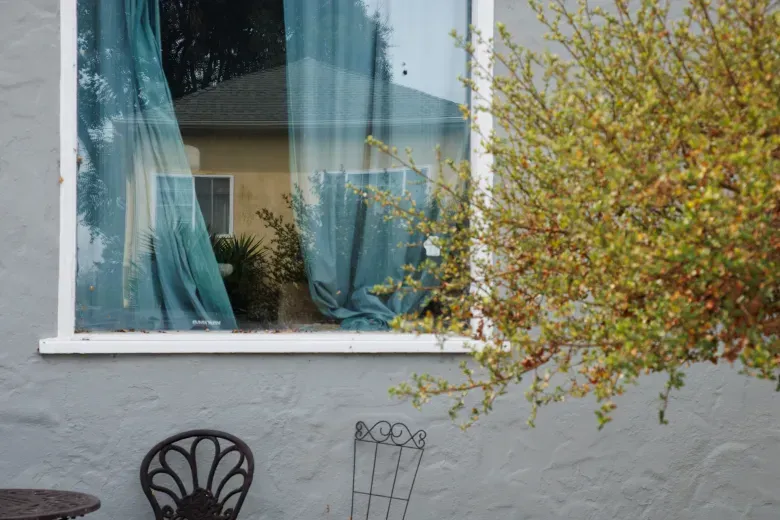
Vice President Kamala Harris’s childhood home is seen in the reflection of a window in Berkeley, Calif., on Friday, Aug. 23, 2024. (Dai Sugano/Bay Area News Group)

